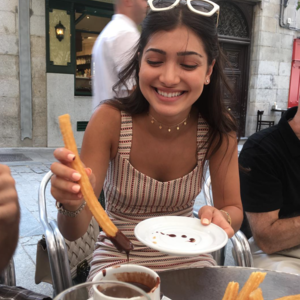If you’ve read any of my articles, by now you should know that: 1) I’m Middle Eastern, 2) I love writing about Middle Eastern foods, and 3) I love avocado toast, but that’s besides the point. So, here I am, writing about yet another ingredient commonly used in Middle Eastern dishes. What is freekeh? I’m spelling it out for you so you know exactly why this should be your new favorite Middle Eastern food.
What Is Freekeh?
Freekeh (pronounced freak-ayy, at least to my family), is a wheat grain that’s harvested while the wheat is still young and green. This produces a very hearty grain, and it isn’t processed like many other wheat products are. After it’s harvested, freekeh is often roasted and rubbed, which gives it a really unique flavor. It has a nice smoky taste that lends a great depth to any dish you include it with. It’s also extremely versatile, and can be made with basically anything.
Where Does Freekeh Come From?
Freekeh has been harvested in ancient civilizations in the Middle East and Mediterranean, from Egypt all the way up to Greece. It dates back to as early as the the 13th century, marking it as an “ancient” grain.
Because freekeh is from the Middle East, it is commonly used in many Middle Eastern dishes. Each country within the Middle East places its own twist on it – warming spices, ground lamb, dried fruits, and nuts are just some of the delicious additions to the hearty grain.
Freekeh’s Nutritional Value
Much like other super ancient grains like quinoa and barley, freekeh is extremely healthy for you. It is low in fat and high in fiber and protein, which keeps you full for a long time after eating it. It’s also high in vitamins and minerals like vitamin B, zinc, calcium, iron and magnesium.
The one big downside to freekeh is the fact that it comes from wheat, which means it isn’t gluten-free (for people who follow a diet without gluten). But, if you’re all about those carbs, this grain can keep your health goals on track.
Freekeh vs. Other Popular Ancient Grains
Compared to quinoa, freekeh has double the fiber and more protein, making it a more nutrient-dense grain. Freekeh also has a lower glycemic index, so it doesn’t wreak as much havoc on your blood sugar and is better for those with diabetes. Freekeh is also a denser grain, so it may fill you up more.
Compared to barley, freekeh is a bit higher on the glycemic index, and has a less chewy bite to it. But freekeh still wins on the protein scale – it has about double the amount of protein as barley.
How to Eat Freekeh
Because freekeh has a subtle smokiness to it, it’s perfect for savory dishes (like with BBQ chicken) or as a protein addition in salads and soups. Or you could cook up a delicious side dish of freekeh, broccoli, and rosemary for a great supplement to your weekly dinner.
You can buy freekeh online on Amazon, or you can find it in supermarkets, especially Middle Eastern specialty stores (I’ve even seen it in Costco before). It comes in both cracked and whole varieties, which are equally delicious, but the cracked kind does cook faster.
With all that freekeh has to offer, it’s no wonder that this super-grain is becoming extremely popular. Buh-bye quinoa, see you later.


